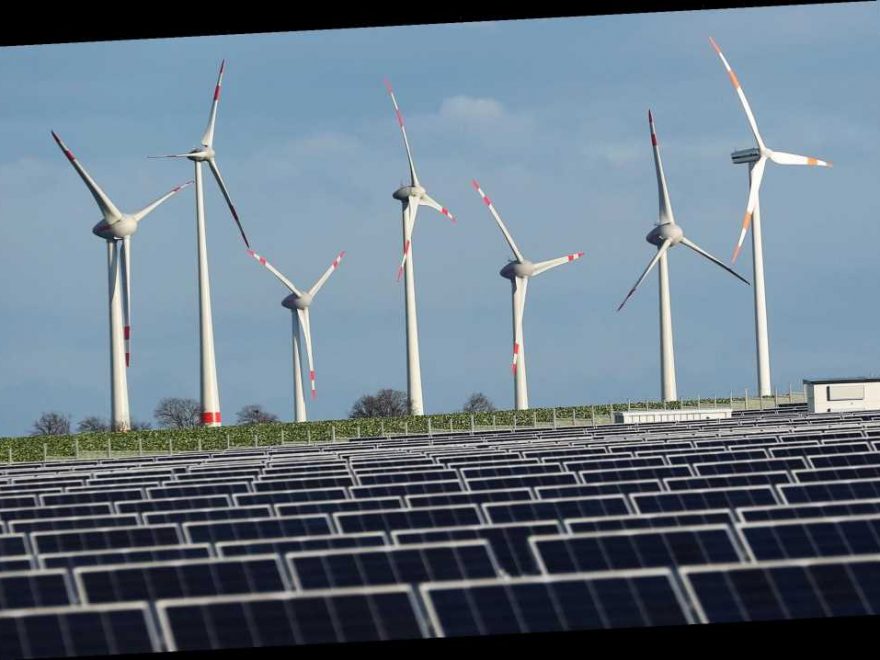Australia is on fire. Antarctica’s “Doomsday Glacier” is melting. Last year was the second hottest year on record. The six hottest years in all of recorded human history? The last six.
Scientists are scrambling to find ways to slow — let alone reverse — the damage caused by human pollution and fossil-fuel emissions.
So here’s some moderately good news in the era of climate change. Wind, solar and other “clean” energy sources are now as cheap or cheaper than dirty fossil fuels at the industrial level, even without taxpayer assistance. And the gap is getting wider.
Costs of cadmium telluride, a key component in solar paneling, could plunge, thanks to a new breakthrough just unveiled at Washington State University’s Center for Materials Research.
“We can have a 45 percent cost reduction in producing the raw material,” says Santosh Swain, a researcher at the center and co-author of the study. (He bases the calculations on general industry estimates for current cost levels).
That could get solar power costs below the US Department of Energy’s 2030 cost targets for renewable energy way ahead of schedule, he says.
“The US Department of Energy has set a target of getting [to] less than 3 cents per kilowatt-hour,” he told MarketWatch. “This technology already proves we can definitely get there.”
The potential breakthrough was published in the Journal of Crystal Growth, a source for workers engaged in research on the experimental and theoretical aspects of crystal growth and its applications.
The experiment involved using high-pressure argon gas, the third most prevalent gas in the earth’s atmosphere, to incorporate arsenic into the cadmium telluride, raising the material’s efficiency for solar power generation at a lower cost of production, he said.
The effects will be bigger on industrial-scale solar power generation by utilities and other power companies. The latest development is only one step along the road to cheaper renewable energy. It’s not about the size of any step, but the cumulative effect of them all, say experts.
Green energy investment expert Elizabeth Levy, a portfolio manager at environmental, social and governance investment firm Trillium Asset Management, said she was “excited but not surprised” by the news.
A wave of scientific breakthroughs, such as the one at Washington State and the development of new battery technologies, is causing green energy costs to plummet, she said. “As renewable and clean energy reach scale, there is no reason to think their cost won’t continue to fall even farther below incumbent fossil-based 20th-century technologies,” she added.
The effect on homeowners looking to install solar panels won’t be that great, however. Raw materials make up a very small share of the costs of installing solar panels on your home, where things like labor play a bigger role. The average cost, before tax credits, is typically somewhere between $15,000 and $20,000.
The industry has been lifted up by a gigantic $2.6 trillion wave of investment over the past decade. This came in the wake of a long and sustained boom in the price of old-fashioned fossil fuels. Oil rose from barely $10 a barrel at the lows in 1998 to more than $100 a barrel for much of the period 2008-2014. Expensive oil and other old-fashioned energy sources made it much more attractive to invest in alternatives.
Based on all the gloomy news about the environment, the fast rise of green energy and its plunging costs, have apparently come not a moment too soon. It is an open question, depending on what economists and scientists you talk to, on whether it has come too late.
Scientists have been warning for two generations that human pollution — from burning fossil fuels and other activities — have been causing dangerous and possibly cataclysmic changes to the environment.
Those taking this view include the US National Academy of Sciences, the US, Chemical, Physical and Geological Societies and another 200 leading scientific bodies around the world, including the French, German, Chinese, Swedish, Irish, British, Canadian, Australian, Brazilian and Indonesian national academies of science, the Royal Meteorological Society and the Science Council of Japan.
Source: Read Full Article
